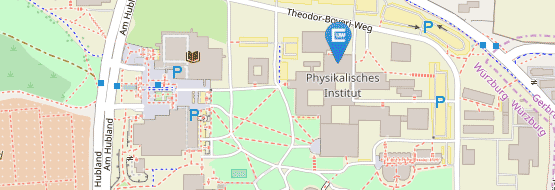A10
Bismuthene and related systems: a new class of 2D topological insulators
Summary
Project A10 builds upon our successful synthesis of bismuthene, a honeycomb monolayer of Bi atoms epitaxially grown on SiC(0001), and its identification as a large gap quantum spin Hall (QSH) insulator in the past funding period. We will address topological phenomena in bismuthene and related atom layer systems, using electron and optical spectrocopies as well as tunneling microscopy. One of the central research objectives concerns our recent discovery of excitons in bismuthene, calling for an exploration of topological signatures in its optical response. Due to its large band gap lying in the near infrared, bismuthene is so far the only topological insulator where such investigations have become possible. A second key objective is the detailed scrutiny of transition-metal (TM = Mn, Co, Fe) induced bismuthene reconstructions. The combination of the high-Z element Bi with open-shell 3d- TM atoms is expected to lead to a fertile interplay between strong spin-orbit coupling and electronic correlations. This includes the question of ordered magnetism in this ultimate 2D limit. Further, we will study the impact of local time-reversal symmetry breaking on topological edge states, making use of the highly-ordered 1D interfaces between the magnetic Bi/TM layers and pristine bismuthene. The work program will be accompanied by continuous efforts to improve quality and scope of our Bi epitaxy, also regarding other experiments (e.g., quantum transport) and Bi-based materials (e.g., topological III-V monolayer phases).


